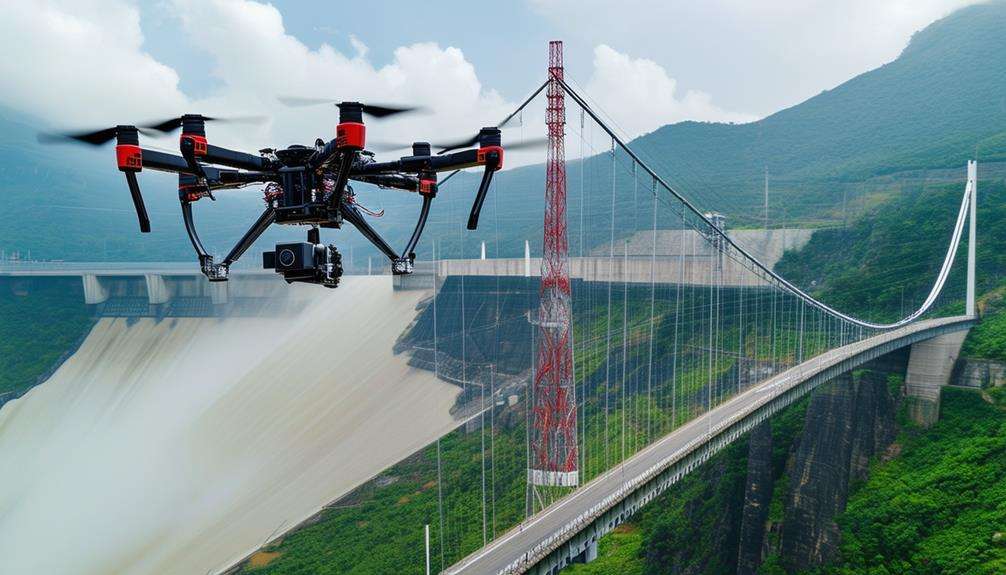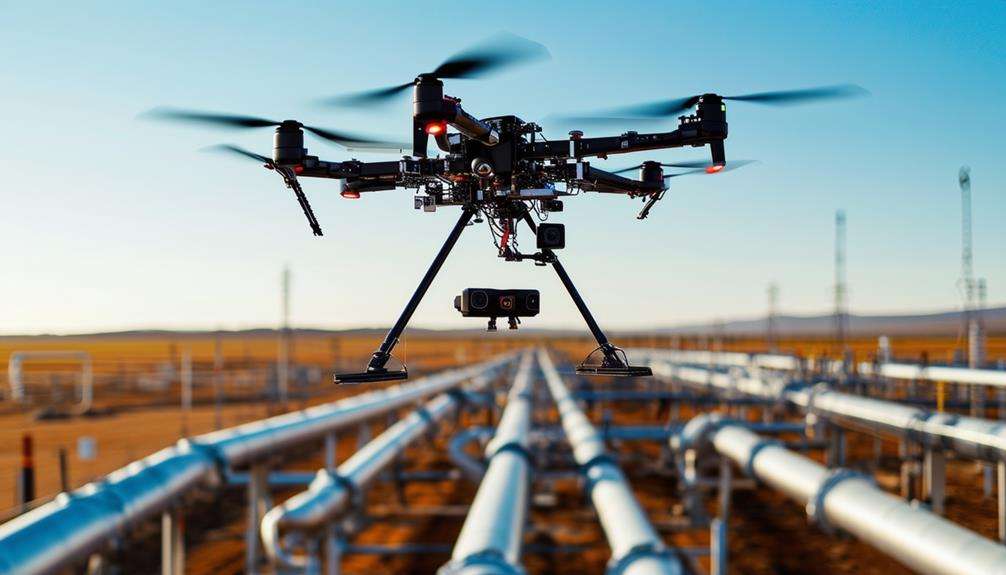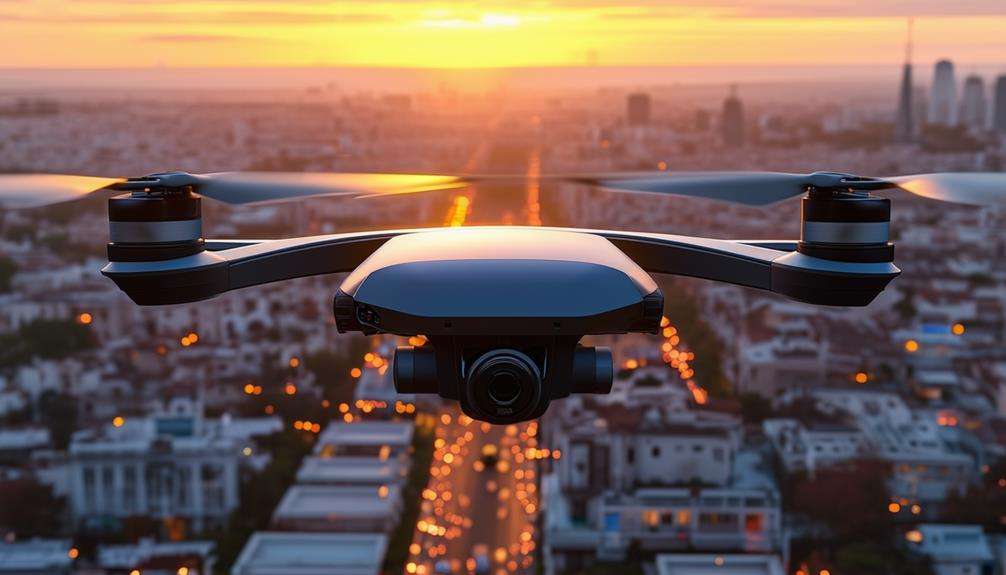What Is the Difference Between a Drone and a Uav?
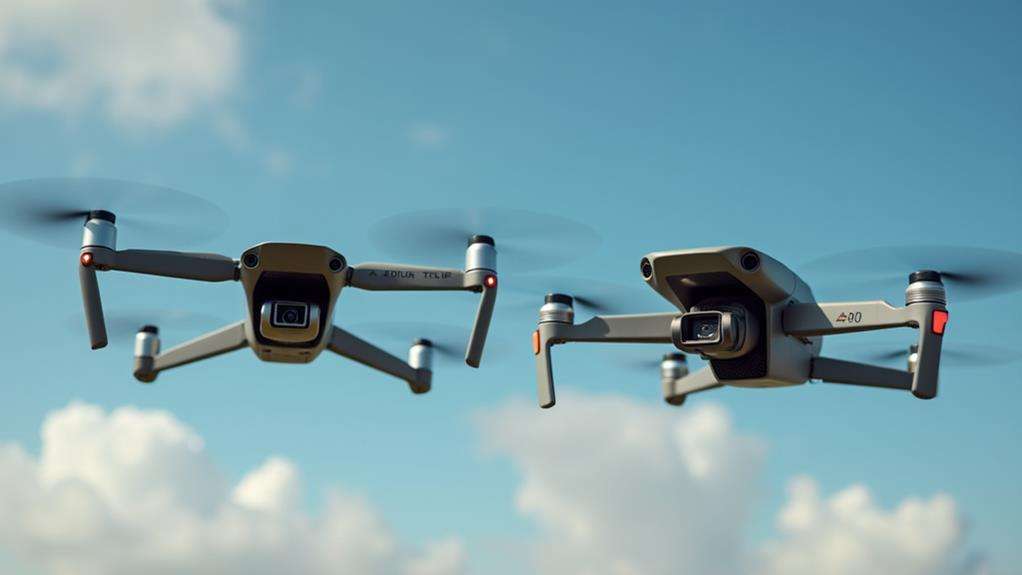
You're likely familiar with the terms "drone" and "UAV," but do you know what sets them apart? While both refer to unmanned vehicles, their definitions and uses differ. A "drone" can encompass a variety of vehicles, including those operating on land, sea, and in the air. In contrast, a "UAV" (Unmanned Aerial Vehicle) specifically refers to aerial vehicles. UAVs often have advanced capabilities like autonomous flight and AI navigation, unlike many consumer drones that rely on direct human control. Curious about how these distinctions impact their applications and technological nuances? Let's delve deeper.
Definitions and Terminology
When discussing definitions and terminology, it's important to clarify the distinctions between "drone" and "UAV." A drone typically refers to small, commercially available unmanned aerial vehicles used for recreation, photography, or hobbies. In contrast, the term UAV (Unmanned Aerial Vehicle) denotes any aircraft that operates without a human pilot onboard, emphasizing the technical capabilities and applications of these aerial devices, particularly in military and commercial contexts.
While the terms "drone" and "UAV" are often used interchangeably, there's a nuanced difference. UAV is generally reserved for more technical discussions, especially in regulatory and military settings where precision and capabilities are crucial. In contrast, a drone can refer to both remote-controlled and autonomous flying devices.
Additionally, the term UAS (Unmanned Aircraft System) encompasses more than just the UAV. It includes the ground control operator and the communication systems, representing a broader operational framework. Understanding these distinctions is crucial when discussing commercial drones or UAVs to appreciate their varying functionalities, from simple recreational use to complex autonomous flight operations.
Key Characteristics
Understanding the key characteristics of drones and UAVs clarifies their roles and functionalities. Drones encompass a broad category of unmanned vehicles, including those that operate on land and sea. UAVs, however, are specifically designed as unmanned aerial vehicles. This distinction is crucial as UAVs must have the capability to fly either autonomously or under the control of a pilot.
When people refer to drones, they're often talking about smaller, commercially available UAVs used for recreational activities, photography, or delivery services. These drones are popular due to their accessible aerial technology, requiring minimal technical expertise.
In contrast, UAVs are defined by their advanced technical specifications and capabilities, such as payload capacity, flight range, and operational autonomy. These characteristics make UAVs ideal for professional and industrial applications where precision and reliability are essential.
Although the terms "drones" and "UAVs" are often used interchangeably, UAV is a more precise term in aviation and regulatory contexts. Understanding these key characteristics provides a clearer picture of how these unmanned aerial vehicles operate and what makes them unique.
Usage and Applications
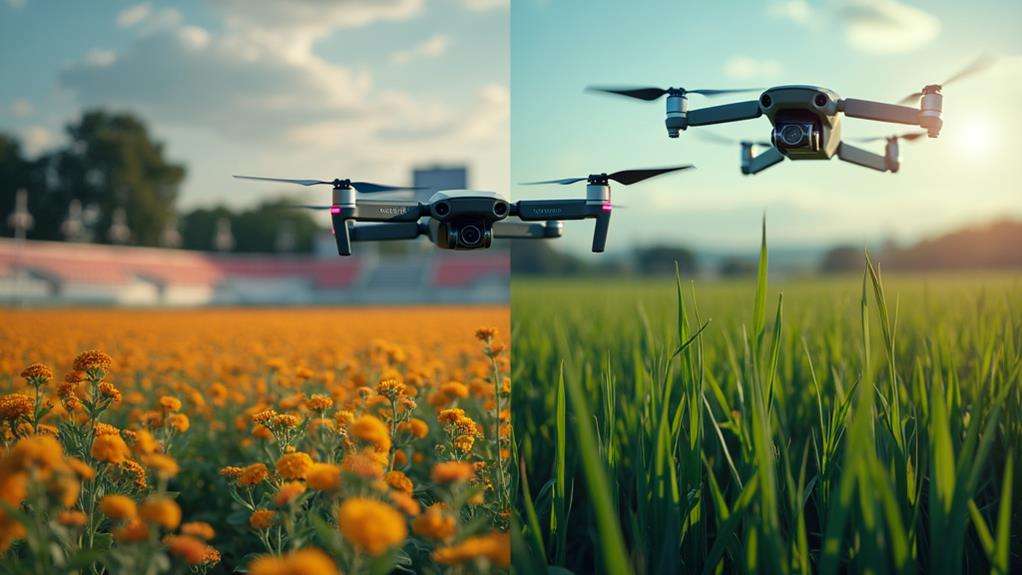
Drones and UAVs have permeated numerous industries, revolutionizing traditional practices and creating new opportunities. In the military, UAVs are crucial for surveillance and reconnaissance missions, offering real-time intelligence without endangering human pilots. Commercial UAVs are making significant impacts in sectors like media, where aerial photography and filming have become more accessible and innovative.
In agriculture, UAVs are transforming crop management through precision agriculture. These aerial vehicles collect real-time data, enhancing crop yields and efficiency. The agricultural drone market is projected to reach USD 14,237.6 million by 2033.
Infrastructure monitoring and industrial inspections are also benefiting from drones. They provide a safer, quicker, and more efficient method for inspecting hard-to-reach areas, minimizing the need for human intervention in hazardous situations. The commercial drone market is expected to exceed USD 100 billion in the next decade, highlighting their growing importance.
While the FAA regulates UAV operations to ensure airspace safety, drones remain popular for recreational flying and hobbyist activities, underscoring their versatility and wide-ranging applications.
Technological Differences
Understanding the technological differences between drones and UAVs (unmanned aerial vehicles) is crucial for grasping their distinct roles and functionalities. Generally, drones refer to any unmanned vehicles, but UAVs specifically pertain to aerial devices designed for flight without a human pilot onboard. UAVs stand out due to their advanced autonomy and remote control capabilities.
UAVs are capable of performing complex tasks autonomously, executing pre-programmed missions, and utilizing AI for navigation, reducing the need for constant human oversight. In contrast, most consumer drones depend heavily on direct human control. This autonomy makes UAVs more suitable for sophisticated operations, such as military or scientific missions.
The technology in UAVs allows them to carry complex payloads and advanced sensors, ranging from high-resolution cameras to specialized equipment for data collection. Conversely, consumer drones are often limited to simpler payloads, like basic cameras, and are typically used for recreational or entry-level professional purposes.
UAVs vary significantly in size and capabilities, from small toy-like devices to large aircraft capable of flying thousands of miles. This variability in technology and payload capacity underscores the advanced nature of UAVs compared to typical consumer drones.
Industry Perspectives
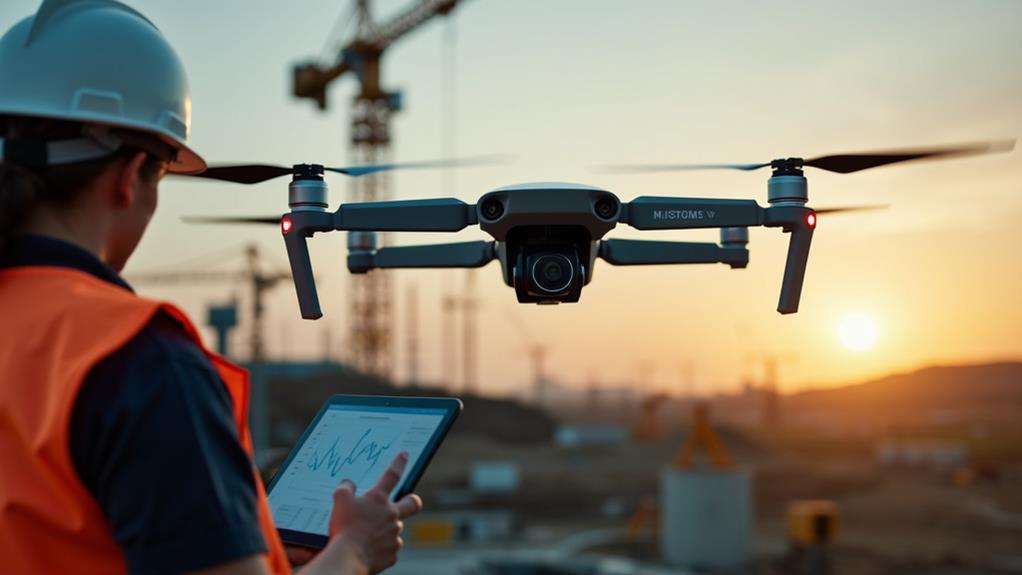
When exploring industry perspectives, it becomes evident that the terminology surrounding unmanned aerial systems is of great importance. Industry professionals often prefer the term "UAV" to emphasize the technical capabilities and autonomous features of these vehicles. This distinction is crucial in commercial applications, where advanced functionalities are essential.
The FAA's use of "UAV" for regulatory purposes highlights its significance in airspace management and safety, ensuring the seamless integration of these sophisticated machines into our skies. In military contexts, the term "UAV" is favored due to its association with advanced technology and specific operational functionalities, avoiding the negative connotations linked to the term "drone."
In sectors such as agriculture, construction, and surveying, the rise of UAVs signifies a growing recognition of their utility beyond recreational uses. Industry professionals require precise terminology to communicate the advanced capabilities and reliability these tools offer. While consumers often think of drones as hobbyist gadgets, industries depend on UAVs for high-level applications.
Understanding the nuanced terminology can help you better grasp how these unmanned aerial vehicles are revolutionizing various fields, underscoring their sophisticated and essential roles in modern industry.

